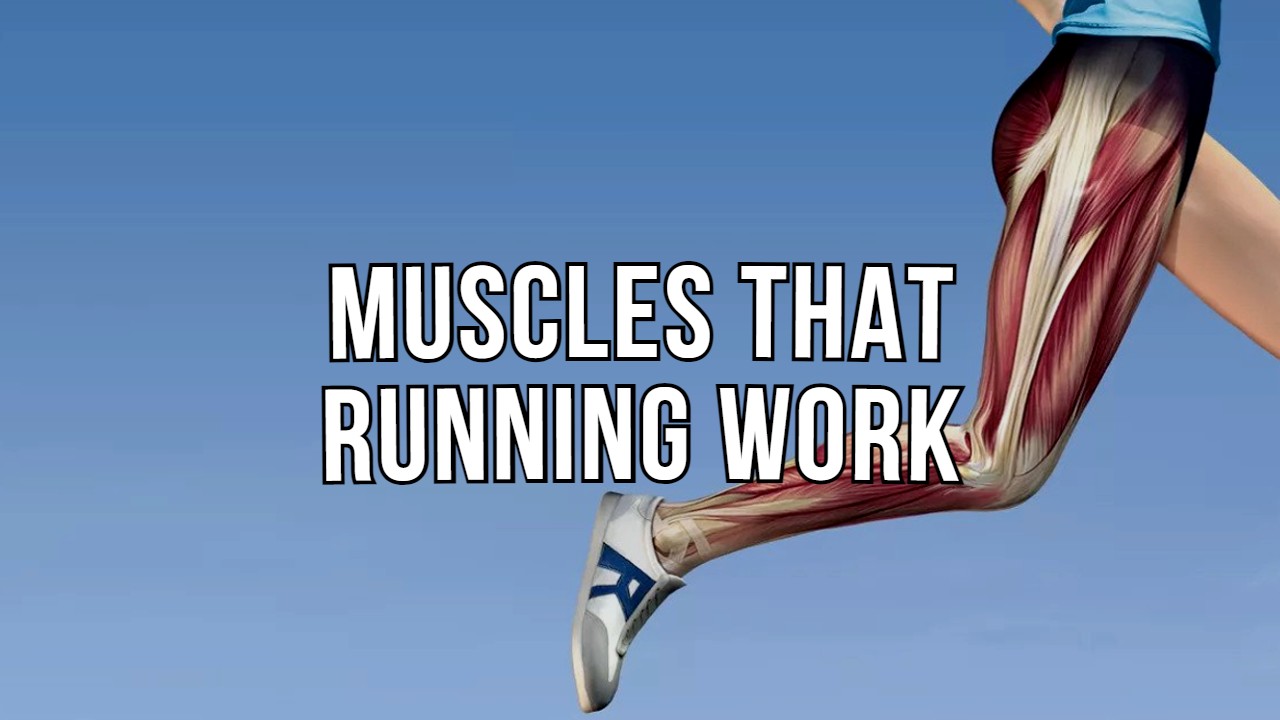[box]
In this Article
- Quadriceps
- Glutes
- Hip Flexors
- Hamstrings
- Core Muscles
- Calf
- Upper Body Muscles Used
- Tips to Prevent Injuries
- Must Stretches to do
[/box]
Do you know that you can develop your running technique by understanding the muscles used in running? From the Shoulder to the toe, The body uses 40 to 90 percent of muscle volume when running.
But the question still remains the same which muscles are actively involved when running? And why should you learn about the biomechanics of muscles?
Learning about the running muscles can help you stay focused on the right training exercises and workouts.
Let’s understand the most important types of muscles involved in running, and their importance, and learn muscle-specific exercises to maximize your running efficacy. Further, you’ll also get to know some expert advice to prevent running injuries.
1. Quads or Quadriceps
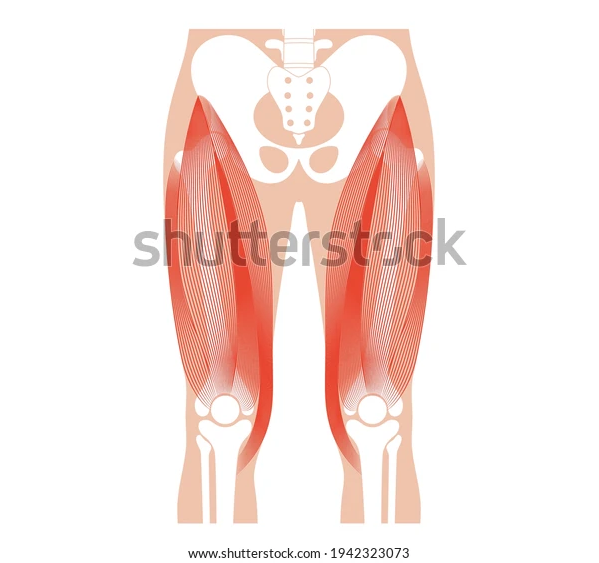
[box]
Quads are the most powerful leg muscles that play an essential role in a runner’s stride. When your foot hits the ground, quadriceps extend the leg at the knee joint and bend your hip to ensure stable running. With pressure on your quads, you propel forward and increase your running speed.
Quads consist of four sets of key muscles located at the front of the thigh; rectus femoris, vastus intermedius, vastus lateralis, vastus medialis.
The rectus femoris is the main hip flexor muscle that flexes the thigh at the hip joint. If your rectus femoris is overused or strained, you might feel pain in your groin area.
Among the quadriceps, the vastus lateralis is the largest and strongest muscle responsible for knee extension.
[/box]
2. The Glutes
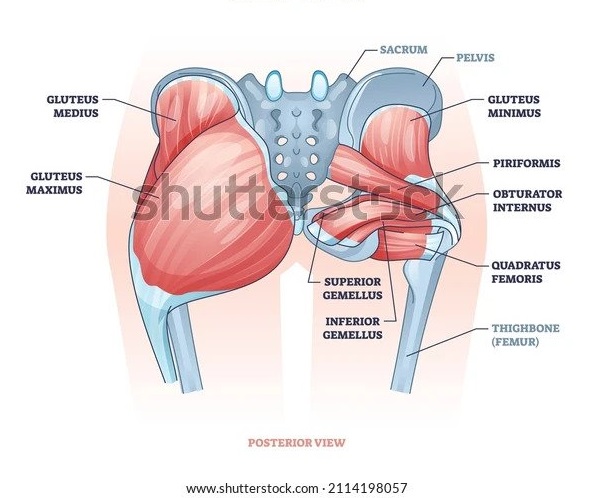
[box]
Being the strongest muscle after quads, your gluteal muscles play a vital role in propelling your body forward while running. It extends your hip and moves your leg behind to prepare for the stance phase.
The Glutes muscles consist of three important muscles: gluteus minimus, gluteus medius and gluteus maximus. These three glutes work together to stabilize your running stride when you’re trying to speed up or slow down.
The Gluteus maximus is the most important muscle that controls your running speed and it plays an important role in extending your hip joint. When these muscles contract, they control the hip’s flexion and extend the thigh.
Researchers from the the University of Winston have confirmed that gluteus medius and minimus produce 3.5 times greater than the peak force produced by gluteus maximus. Hence, having strong glutes will give you a stable foundation to generate speed.
[/box]
3. Hip Flexors
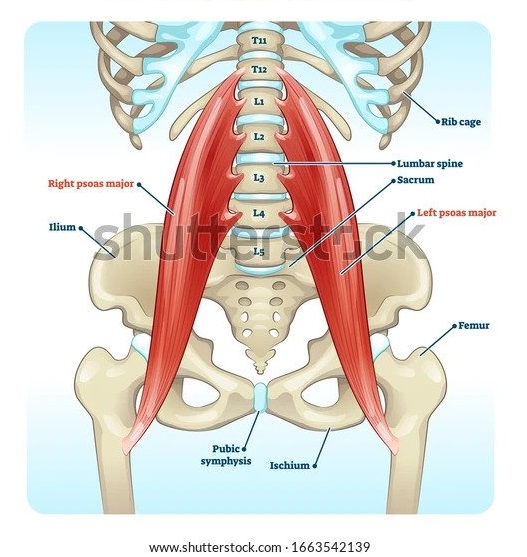
[box]
Hip Flexors are located at the front of your hip and they provide stability and strength to other muscles. For runners, these are vital muscles to strengthen as they are more prone to sustain injury.
If you’ve ever suffered from Achilles tendonitis, runner’s knee, or groin strain, it may come as a surprise to learn that your hip flexors could be to blame. So strengthening this area and stretching will stabilize your running.
The Iliopsoas is the largest hip flexor that aids a runner’s gait and helps lift your hips. So to ensure mobility, it’s important to maintain flexibility in your Iliopsoas.
If you want to become a better runner and prevent muscle strain, you need to maintain a balance of strength between hip flexors, glutes, and hamstrings.
[/box]
4. Hamstrings
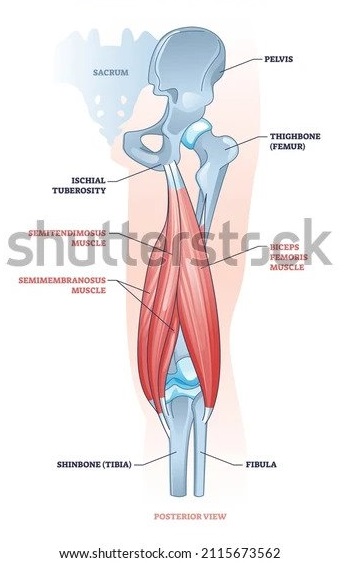
[box]
Hamstrings help you to slow down by controlling your knee extension. These muscles are located at the back of your thighs. Their role is to allow smooth knee and hip movement.
The three major muscles of the hamstring are:
- Biceps femoris: It allows knee extension and hip rotation
- Semimembranosus: A long muscle at the back of the thigh that allows your thigh to extend
- Semitendinosus: It is the longest muscle that gives support to your thigh bone.
When a runner doesn’t stretch their hamstrings before running, they are prone to sustain hamstring injuries like contusions, acute hamstring strains, and the most common, hamstring tendinopathy.
Therefore, sports physicians recommend sprinters stretch their hamstrings before any strenuous activity to prevent hamstring injuries.
[/box]
5. Core Muscles
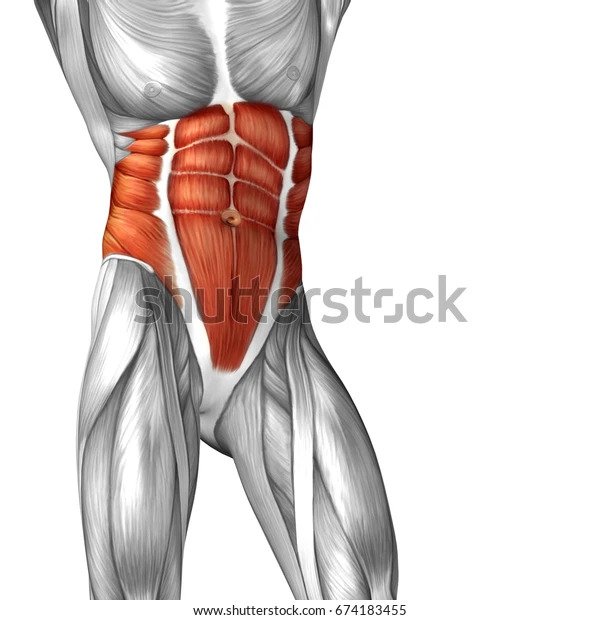
[box]
Core muscles consist of 30 muscles that connect your abdomen to your legs. They are also known as the supportive muscles that control your running stability, postural control, body balance, and body alignment during running.
Important core muscles include:
- Transverse Abdominus: holds the chest by acting as an inner weight belt
- Obliques: these muscles are for maintaining body rotations while you bend during running
- Rectus Abdominus: also known as ‘six-pack muscle.’ It provides stability to your lower back, pelvis, hips, and knees.
Running coaches suggest strengthening your core muscles to enhance endurance and generate power for best performance. Working on your muscles will help you run faster and for longer periods of time.
[/box]
6. Calf Muscles
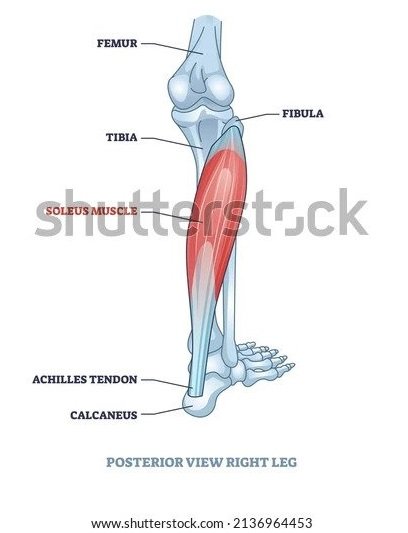
[box]
Tight and inflexible calf muscles can negatively impact your running stride. Calf muscles are the most important muscles of your lower body that allow you to lift your heels up the ground during the swing phase.
The calves consist of two muscles:
- Gastrocnemius: the outer, larger muscle that absorbs the shock when you place your foot on the ground.
- Soleus: It is the inner calf muscle that helps you to propel forward.
Among all the muscles, the soleus muscle is the most neglected one by runners.
Surprisingly, it is the most important muscle that needs continuous workout to maintain your running speed. The soleus is a skeletal muscle pump that pumps deoxygenated blood back to your heart.
See best running shoes for tight calves.
When runners feel muscle fatigue after running, this is partially due to weak calf muscles. Therefore, if you want to strengthen your calf muscles and prevent calf injuries, you need to do regular stretching exercises such as soleus squat, calf raises, and jumping rope.
[/box]
Upper Body Muscles Used When Running
For better running, most sprinters usually focus on lower body muscles. You’ll be surprised to know that researchers suggest a neuromechanical link between your arms and head that gets activated during running.
The most important muscles included in the running are:
- Arms: aids the balance of the runner by maintaining the upper and lower body forces.
- Biceps: strong biceps are required to swing your arms forward and backward.
- Chest Muscles: These muscles support your upper body and stabilize the runner’s stride.
- Scalene Muscles: These are the shoulders muscles that help maintain good posture when running for long miles.
Tips to Prevent Running Injuries
From runner’s knee to shin splints, running injuries can affect your daily workouts as these ailments cause temporary discomfort and severe fatigue. So, it is important to take steps to prevent running injuries. With the points mentioned below, you’ll dramatically reduce your injury risk and enjoy hustle-free workouts.
- Invest in quality running shoes to prevent foot injury.
- Daily stretches to warm up your muscles and prevent fatigue.
- Incorporate strength workouts to improve your endurance and running speed.
- Go for muscle-specific exercises and focus on supportive training muscles.
- Running coaches emphasize keeping yourself hydrated by drinking plenty of water and juices.
- Give your muscles time to recover and gain strength after each running session.
3 Stretches Every Runner Should Do
Every runner should pre-run and post-run stretches to warm up their muscles.
Experts suggest holding each stretch for about 10 to 30 seconds. Not only does it helps to improve the flexibility of joints, but it also helps runners to relax.
The Calf Muscle Stretch
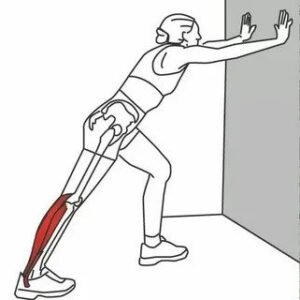
- Face against the wall and extend both your arms out in front of you
- Place one leg forward and slightly bend your knee such that it faces forward
- Straight back your other leg and lean towards the wall to stretch your calf muscle.
- Hold the stretch for 30-60 seconds, and then switch sides
The Seated Quad Stretch

- Sit on the floor and move your knees under your buttock with your foot flexed back.
- Gently place both your elbows on the ground.
- Slightly lean backward to stretch your Quad muscles.
- Hold the stretch for 30 seconds.
Kneeling Hip Flexor Stretch
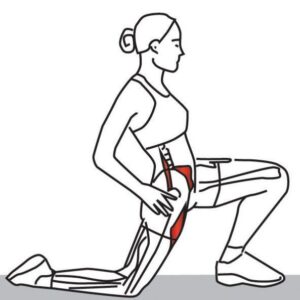
- Kneel on both the knees bringing one knee forward and the other leg behind you.
- Make sure that the right knee must be directly over your right ankle.
- Straighten your upper body and slightly lean backward.
- To increase the stretch, squeeze, and contract the glute muscles of your straightened leg.
- Hold the stretch for 30 to 60 seconds, then repeat the same steps with the other leg.
The Bottom Line
To sum up, being a better runner involves a deep understanding of what muscles does running work, so that you can train your muscles and build your endurance.
Whether you aim to run for long miles or go for short-distance running, your muscles must be in the best shape.
Also, make sure you’re following all the directions suggested by your trainer.
The key to best running is understanding your body and taking care of it by doing exercises and workouts.
References
Lenhart, R., Thelen, D., & Heiderscheit, B. (2014). Hip Muscle Loads During Running at Various Step Rates. Journal Of Orthopaedic &Amp; Sports Physical Therapy, 44(10), 766-A4.
What Muscles Does Running Work?. Healthline. (2022). Retrieved 27 May 2022, from
Yegian, A., Tucker, Y., Bramble, D., & Lieberman, D. (2021). The neuromechanical linkage between the head and forearm during running. American Journal Of Physical Anthropology, 174(4), 752-762.
The 10 most effective stretches for runners. Medicalnewstoday.com. (2022). Retrieved 27 May 2022, from
Soleus, the forgotten muscle for runners – Westcoast SCI Physiotherapy. Westcoast SCI Physiotherapy. (2022). Retrieved 27 May 2022,
Bartlett, J., Sumner, B., Ellis, R., & Kram, R. (2013). Activity and functions of the human gluteal muscles in walking, running, sprinting, and climbing. American Journal Of Physical Anthropology, 153(1), 124-131.
